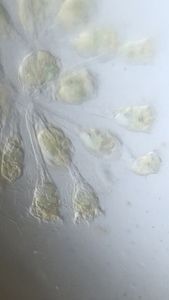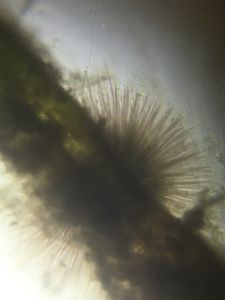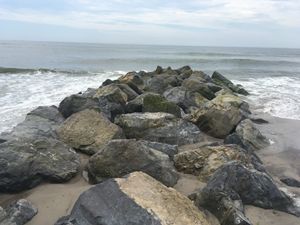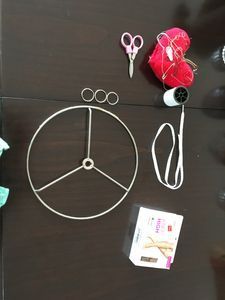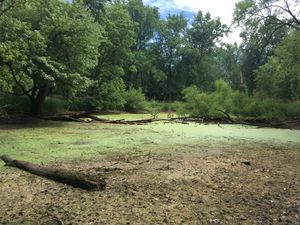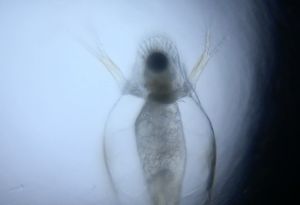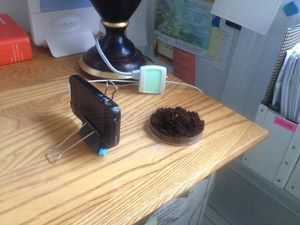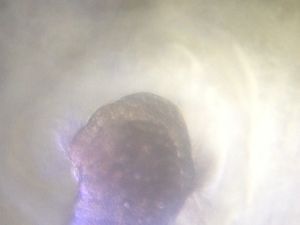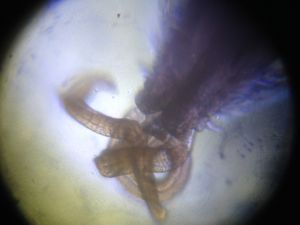Atlantic/Pacific
 Feb 14, 2016 • 7:36 PM UTC
Feb 14, 2016 • 7:36 PM UTC Unknown Location
Unknown Location 140x Magnification
140x Magnification Unknown
Unknown
Matthew Rossi
I'm a novelist, essayist, and a writing consultant. I work in the writing centers at Columbia and Baruch University and explore research into the overlap of maker cultures and writing. My work with the Foldscope tends to focus on finding wild creatures in urban spaces and looking at how human works are shaped by the movements of the biosphere.
40posts
105comments
4locations
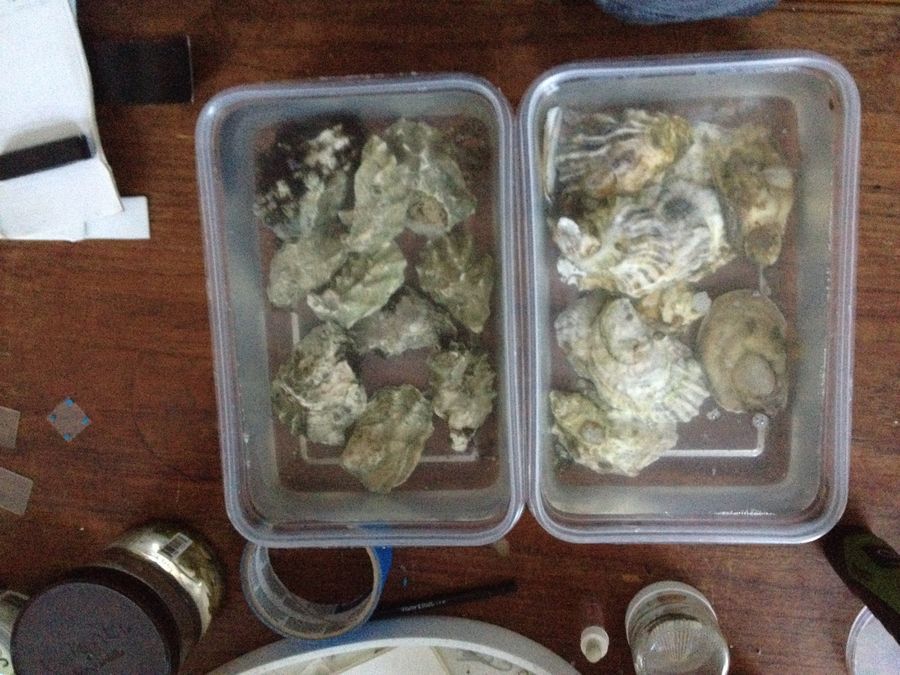
Piggybacking off of my last experiment, I decided to see what else was living on the oysters. The oyster place near my home has an oyster happy hour every weekday in which they are offered cheap. They didn’t blink when I asked them to serve the oysters with both shells and only looked at me moderately strangely when I stuffed them into napkins and took them home with me.
I ordered a dozen oysters total, half from Washington and half from Massachusetts for a comparison of the life on each coast. They’ve been living on my desk for the last week in a half gallon each of artificial seawater. This setup isn’t ideal, so I’ve had to change the water periodically to keep everyone happy. Nonetheless, it’s been extremely enlightening.
On the first night, I observed a surprising amount of free swimming plankton coming off of the oysters. In the Atlantic tank a fairly sizable amphipod swam around, while in the Pacific tank, I found this copepod (and others) darting around in the water.
I ordered a dozen oysters total, half from Washington and half from Massachusetts for a comparison of the life on each coast. They’ve been living on my desk for the last week in a half gallon each of artificial seawater. This setup isn’t ideal, so I’ve had to change the water periodically to keep everyone happy. Nonetheless, it’s been extremely enlightening.
On the first night, I observed a surprising amount of free swimming plankton coming off of the oysters. In the Atlantic tank a fairly sizable amphipod swam around, while in the Pacific tank, I found this copepod (and others) darting around in the water.
Too quick moving to get a great shot of, the body shape is nonetheless different than other copepods I’ve seen. It’s fuzzier, for one, with a longer body and shorter antennae than others I’ve caught.
On the Atlantic side, the dominant life form seems to be molluscs. Rather than the coating of barnacles my Pacific oysters have, the Atlantic oysters have limpets crawling across them. I had not known prior to this that limpets move, having only seen them at low tide, when they seal themselves against the rocks and cling for dear life. But these have proven tremendously mobile. Crawling along them, I’ve also found a number of bivalves. From the look of the beards hanging off of them, they seem to be mussels (or possibly other oysters), equally mobile.
Here is a view of the inside of one, in which you can see the fluttering movement of what seem to be cilia for drawing in water and (I would guess) food.
Here is a view of the inside of one, in which you can see the fluttering movement of what seem to be cilia for drawing in water and (I would guess) food.
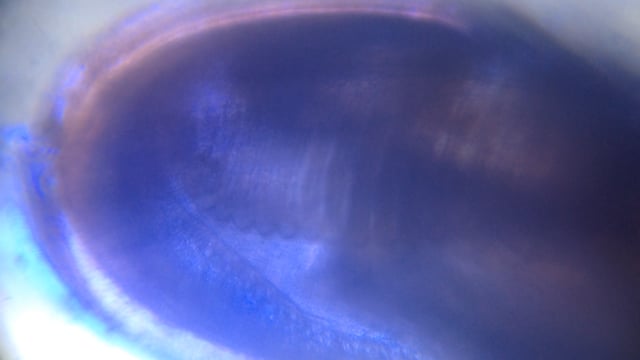

An overhead view of the tops of the bivalve is similarly interesting, as it shows off the membrane holding together each side.
And here is one on a fairly vigorous crawl, its beard trailing behind.
By far, the most interesting thing I’ve found in the Atlantic tank, though, are several polychaete worms. I’ve seen bristle worms in most marine samples I’ve taken. Usually they’re the mobile sort, actively hunting through the sample.
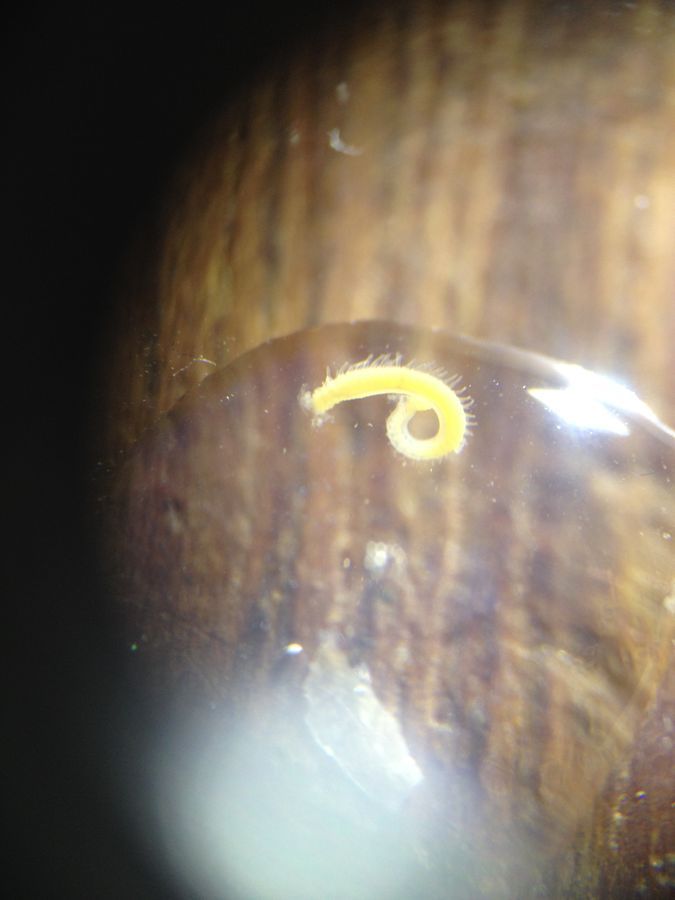
These seem to be filter feeders, their mouths surrounded by frilled antennae, and they seem to be built for anchoring, their backs a sort of foot to hold them in place.
Here you can see clearly the movement of its “feet.” What seem to be feet appear under the microscope to be in constant motion, cilia flurrying.
I suspect these worms live on the oysters, possibly digging into the shells or building up burrows around them. On the Pacific side, I’ve seen a similar worm peeking its head out from a mass of seaweed growing on the oyster (why is there seaweed on the oyster still? Maybe the oyster bar guessed my purpose and wanted to give me as much as possible to work with). The less than ideal living conditions might have inspired them to leave their burrows and wander. Or maybe they’re free swimming and just caught a ride.
A quick shot of its gut allows us also to see its insides in motion.
A quick shot of its gut allows us also to see its insides in motion.
Back on the Pacific side, the dominant creature is barnacles. At Tom’s advice, I’ve fed them some brine shrimp eggs (which may soon yield brine shrimp, if the barnacles don’t eat them all) and tried to keep the water fresh and mobile. The barnacles appear to have been busy. On a recent look over the contents, I noticed a spongy orange mass on the bottom. Hoping I might have caught a sea sponge (worth looking at if it were small enough), I realized there were many tiny eyes peering out at me from the sample.
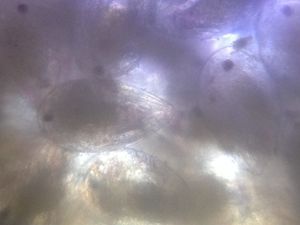

At some point when I wasn’t looking (or perhaps before in my care) the barnacles must have reproduced. I squirreled the eggs into another container to grow and (hopefully) carry on a cycle of life as a barnacle. If all goes well, I will post their life cycle.
Sign in to commentNobody has commented yet... Share your thoughts with the author and start the discussion!
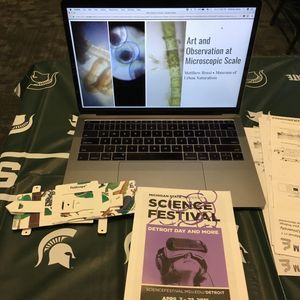
 0 Applause
0 Applause 0 Comments
0 Comments




